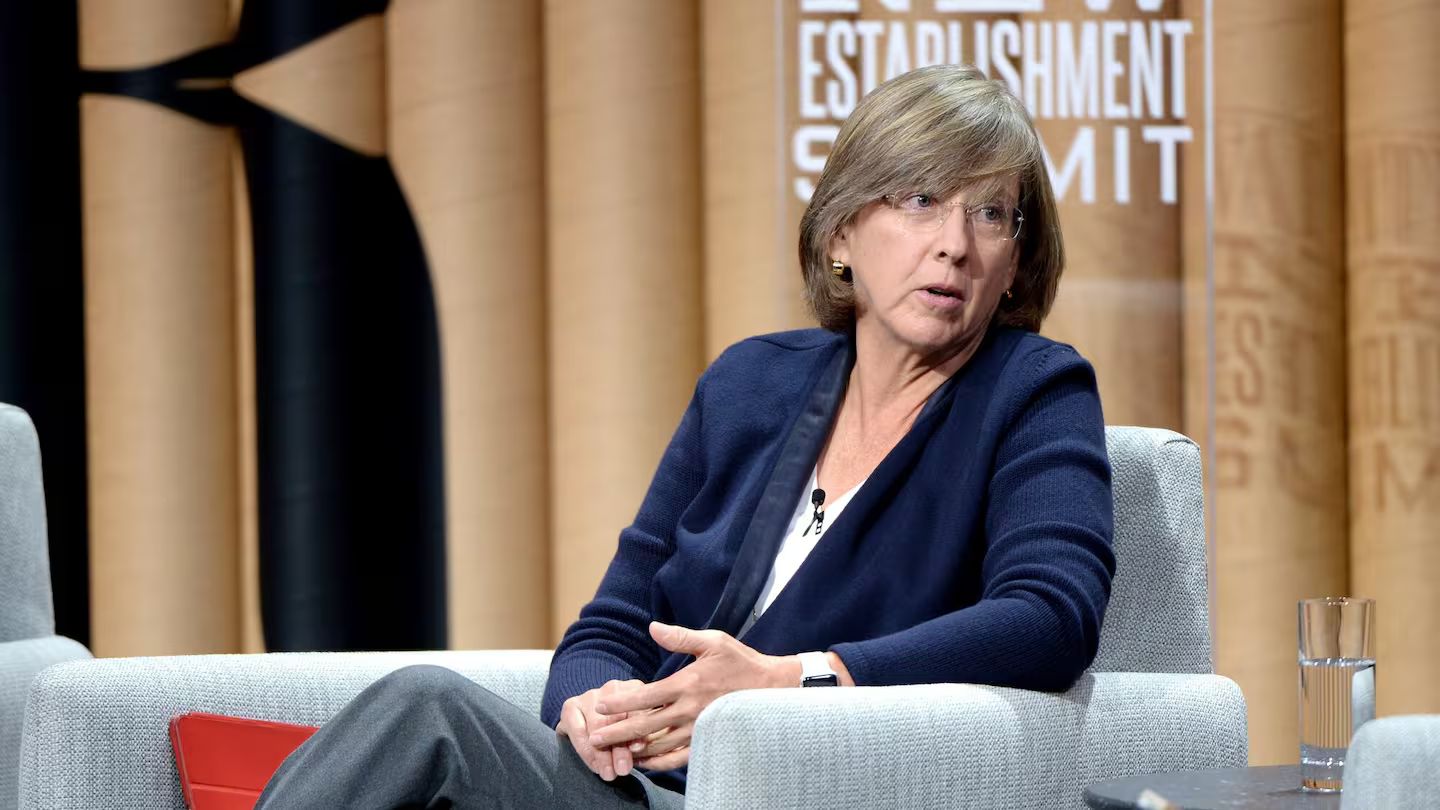- The 2x2
- Posts
- Mary Meeker, Tech Prophet
Mary Meeker, Tech Prophet
Welcome back to The 2x2 - the ultimate newsletter for executive consultants.
Like the new logo? Then you’ll love the new podcast —> Listen here.
This week, I’m taking a detour from indie consulting to share a big insight on AI pricing.
Blame Mary Meeker.
She dropped a 340-slide bomb of a report on AI Trends in late May.
Ready to nerd out? Keep reading…
⏰ Today in 5 minutes or less:
Remember when your mobile data got throttled? AI pricing models are about to bring you back 2012.
AI costs don’t scale like SaaS. Per-unit usage costs will decline (Moore’s Law), but more and more AI units will be consumed (Bye Bye Scale!)
Three free monetization ideas for AI product managers.
Two free cost management ideas for AI users.

My Take: How AI Is Rewriting the Rules of Monetization
AI is blowing up business models left and right – yet on the surface, AI pricing strategies still look like SaaS pricing from 10 years ago.
That disconnect got my attention because it’s at the intersection of things I’m deeply interested in: how companies make money and how technology quietly rewires the mechanics of value.
Once I started thinking about it, I couldn’t stop.
It’s also the kind of problem we tackle for most clients at my consulting business, Keenan Reid.
But what really pushed me over the edge? Mary Meeker. I’ve been following her since early in my career.
Recently, she dropped a monster of a report on AI trends.
Naturally, I cleared an afternoon (*ehem, procrastinated everything else*) to deep dive into all 340 slides of this monstrous deck.
After ending my reading session, I came up with five predictions about how pricing and cost management could evolve in this AI-powered economy.
Who’s Mary Meeker Anyway?
For those unfamiliar: Mary Meeker is a tech prophet, venture capitalist, and former Wall Street securities analyst. She’s best known for her annual Industry Trends report, which she published from 1995 through 2019.
And for nearly two decades, she’s been Silicon Valley’s data whisperer – turning giant shifts in user behavior, tech, and capital markets into slide decks that have become essential reading for investors, executives, and policymakers.
Now after six long years, she dropped a 340-slide deck about the trends related to AI, covering everything from productivity gains to adoption curves.
Girl’s usually right. So we should listen to what she says.
The Big Insight: AI Costs Don’t Scale Like SaaS
What stood out to me wasn’t said directly in Mary Meeker’s report: AI changes not just how we build products, but how we charge for them.
As a business model and monetization expert in the tech industry, I’ve been thinking about how AI is changing both – especially for AI-powered solutions.
With SaaS, most costs are incurred upfront. Once it’s developed, serving more users is cheap, so profit scales fast.
Experts assume that AI would follow Moore’s Law – where technology gets cheaper over time and costs decline. In the case of AI, we expect AI unit costs to decline.
They will - but with a big difference in the business model.
AI will stay costly to run. Why? As AI tools get better, companies will use more units– they’ll scramble for more and more intelligence - and their usage will stay expensive.
Every use taps into computing power. If AI unit usage grows faster than costs fall, total cost won’t decline the way it has for past technologies.
To me, this is one of the biggest insights in the last five years.
This all led to my take that we can’t keep pricing AI like it’s SaaS. The monetization models have to evolve in order for tools to maintain SaaS-like profit margins.
The Problem: AI Cost Creep
The emerging pricing model for most AI-solutions is similar to SaaS on the surface. Companies have tiered subscriptions, often freemium, with feature sets that increase in value.
To control usage costs, paid tiers include a fixed number of usage credits. Once these are consumed, costs increase: additional charges accrue, add-on credits can be purchased, or the underlying AI model is downgraded until the period resets.
We’re using several of these in our content development at The 2×2 and in our backend consulting operations at KRS. We’re seeing the ‘credit tier’ model adopted by many solutions: e.g., Make.com (for ops automation), ElevenLabs (content generation), ChatGPT.
The problem is we are getting huge value from these tools. So much value, that our usage is growing very, very fast. I have little ability (and zero technical know-how) to gauge or monitor our how our total AI usage cost will change.
Play this forward. I predict a day where:
Operations slow (or break) because one AI solution, embedded in our processes, gets throttled or stops usage. (e.g., invoices aren’t sent).
Our AI cost creep results in a mega bill we weren’t expecting. (e.g., forced to adopt a $2000/year tier upgrade to send this month’s invoices).
That’s just me and my happy little holdco. What happens when this goes down at a multi-billion business? What happens when you’re the OPEX owner or the CTO, and it’s your reputation on the line?
Not good for you, or if you are the AI product owner, not a good experience for your customer.
Five Monetization Insights to Adopt in the Age of AI
How can AI product leaders address these issues? I don’t have the full answer, but here are some of my early thoughts:
Shift from Credits to Outcomes. AI enables full outcome realization. Instead of monetizing the use of a tool, charge customers for the actual outcome delivered. This is also good for the AI product itself, as it forces solutions to work efficiently. Win-win for customer experience and margin management.
Hypercustomize Pricing for Individual Value. AI can set different prices for every customer based on usage, region, or even the time of day. Think of uber pricing, but smarter. There are rumors that Delta will implement this model - while I hate this for me, I like it from a business perspective. If the model is smart enough to give me a deal when I need a deal, I don’t think the experience will degrade. Customers are generally happy paying for value realized, and AI enables pricing to reflect personalized, point-in-time value. I’d like to see AI solutions incorporate this approach over fixed credits.
“Smarter-Smartest” Pricing. Instead of the feature increases that the “Good, better, best” model offers, this new pricing will evolve into model capability increases. Simply put, intelligence becomes an upsell – like how ChatGPT’s 3.5 model is free, but you get access to a smarter 4.0 model when you upgrade to Plus. In theory, this helps manage the customer experience. Less price sensitive buyers seeking higher value will self select into higher intelligence tiers. Cost sensitive buyers will downgrade to models / tiers where cost-to-serve is less, and where development costs have already scaled.
Unlike SaaS, customers themselves have more levers to control price. I think there are a few interesting models customers can adopt to control costs.
Data is the New Margin. Customer data is valuable, so expect to see more models where shared anonymized data earns discounts – or where customers pay extra to keep things ultra-private.
AI Compute is a Commodity. Smart companies could manage compute like a commodity. They could pool demand for better learning capabilities, time their access for low-demand periods, trade it on spot markets, or offset it with ads. I feel like this is an exciting one to watch for in the start up space.
The Bottom Line
In a post-SaaS world, AI changes how to charge for value.
The underlying economics of AI are different from what we’re used to in SaaS platforms, so we're going to see resulting changes in business models and pricing structures.
But I’m also curious what others are seeing out there.
If you haven’t seen Mary Meeker’s report yet, I suggest you also take an afternoon off, make a few cups of coffee, and take on the full 340-slide tech prophecy.
Then maybe, we can exchange notes. Or debate it on the new pod.
Are you down? LMK.

How to Beat Isolation a Solo Practitioner
Feel like a lone wolf in your practice?
Working solo has its perks, but it can leave some feeling disconnected.
Creative Boom’s advice on beating isolation is a game-changer.
Find your tribe: Join professional networks or coworking spaces to exchange ideas. Personally, I found my people by joining CHIEF. Others find value in Fractionals United.
Embrace virtual hubs: LinkedIn groups, Slack channels, and masterminds can bridge the gap – if you’re an introvert who doesn’t do well in in-person work events.
Set a rhythm: Create routines with intentional breaks to stay balanced and motivated. Block an hour in your schedule for that Pilates session or a simple mental health break, if you must.
Isolation doesn’t have to be part of the journey.
Building a network that fuels your work and well-being certainly helps.
What’s your go-to strategy for staying connected?

Remember, the path to success is paved with continuous learning and embracing fresh perspectives.
Let's stay connected, share ideas, and elevate your consulting business.
Stay curious, friends.
The 2×2 is brought to you by Keenan Reid Strategies
Having trouble viewing this email? Check out this and past issues on our website.
Was this newsletter forwarded? Someone is looking out for you. You should definitely subscribe!


